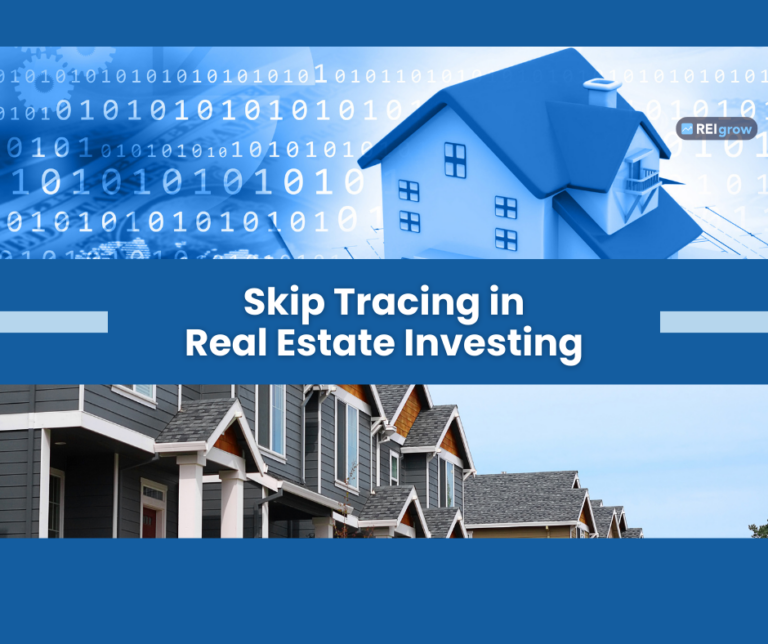How to Find Abandoned Property in Your Market
Abandoned properties offer investors the opportunity to acquire assets at a discount and generate significant returns.
Most owners of abandoned property are motivated to sell. However, in our experience of buying abandoned property for almost 20 years, we’ve found the key is in finding the owners’ contact information and solving their ‘need’ to sell their property. After all, maintenance costs, taxes, and insurance add up quickly.
But, abandoned real estate properties are not typically advertised for sale.
Therefore, you need to utilize time-tested strategies to identify abandoned properties and get the owners’ contact details. This will give you a competitive edge over other investors, saving you time and effort.
Here are five ways to find abandoned properties in your market:
1. Pull Data from Real Estate Software to Build Your List
Over 15 million homes in the US are vacant.
Not all of them will become distressed assets, of course, but some of them will.
Most real estate investors start by using real estate data software to pull a list of potential leads for abandoned homes. You can use filters to select properties that meet different criteria, such as:
- Occupancy status is “vacant”
- Owner is not occupying the property
- Owner has more than 50% equity
Once you have a list of hundreds or thousands of properties in a market with absentee owners who have sufficient equity, you need to sort and trim it down to include the information that you are interested in.
Next, you can import your large list of leads into a real estate investing platform like REIgrow to automate your outreach campaign.
With built-in automation features for text, email, phone calls, ringless voicemail, and direct mail, you can easily reach out to leads, nurture relationships, and persuade them to contact you or book an appointment.
Getting organized early on with an all-in-one real estate marketing platform like REIgrow, will save a great deal of time and effort each day.
2. Use Government Data: Websites & Local County Clerk’s Offices
Local and state laws and regulations essentially define what constitutes ‘abandoned’ property.
Therefore, you can use government data to identify abandoned properties by searching websites and visiting the local county clerk’s offices.
Begin by checking the county clerk’s website for tax records. Look for terms like “tax lien,” “immediate possession,” and “unclaimed” to identify properties with potential issues.
These public offices also maintain public records of property ownership, which you can use to track down current owners.
You can also search for unclaimed property in a state through NAUPA’s (the National Association of Unclaimed Property Administrators) Unclaimed.org.
3. Scout Select Neighborhoods for Abandoned Properties
Do you know of any localities in your market where you might find abandoned properties? You can drive around and explore. If a neighborhood seems unsafe, bring a friend or colleague along.
Driving around to find abandoned properties that aren’t listed on the market can unlock some unique investment opportunities for you.
Look for some obvious signs, such as –
- Damaged or no windows
- Visibly overgrown landscaping
- Paint or plaster peeling off the exterior walls
- Mold growth on the exterior walls or around the front gate
- Damaged roofing
- Crumbling driveway
- A clear lack of lighting
- Not matching the surroundings
Click pictures of potential fix-and-flips that exhibit signs of despair and note the address. Next, skip trace the owner to get their contact information.
Once you upload property and owner information to a real estate investing software like REIgrow, it will effectively automate your outreach campaign, build relationships, and nurture leads to closed deals.
4. Use Property Auctions
Lending institutions in the US often take possession of properties when borrowers default on their mortgages.
The government may also seize properties for violating federal laws. In some jurisdictions, states can take over unclaimed properties through escheatment.
Most of these properties are sold “as is” and well below their market value at auctions.
No wonder, experienced real estate wholesalers are always on the lookout for such auctions, as the likelihood of these properties being abandoned or in a general state of disrepair is quite high.
Here’s what you can do to find abandoned properties through auctions:
- Visit local auctions
- Use online platforms like Auction.com
- Contact your local government to gather information on auction listings
You may not be able to inspect the property in person during an auction. If this is the case, bring a professional inspector along who can point out potential flaws in the deal on offer.
5. Work with a Real Estate Agent Specializing in Foreclosure Properties
Serious real estate investors look for distressed properties in the early stages of the value appreciation cycle.
They often work with real estate agents who specialize in such properties to identify abandoned foreclosure properties. They may have lists of abandoned homes that are not yet publicly listed.
Local agents will keep an eye on such properties because they can potentially impact the market for surrounding properties.
Realtors also have access to the multiple listing service (MLS) network, which they can use to search for abandoned foreclosure properties in your market.
Buy-and-hold investors can also network with wholesalers to find deals on abandoned homes and flip contracts for a profit.
Build Your Own List and Close More Deals
Speed is the name of the game when investing in abandoned real estate.
Therefore, you need to build your own list and double down on your efforts to close more deals through a dedicated, all-in-one marketing platform like REIgrow.
The key factor in a great real estate CRM system is Automation. You want a system that will automatically send personalized SMS, email, and voicemail blasts as you to your leads. The best systems will do this on your behalf 24/7 day after day, which leads to getting more deals under contract.
Without an all-in-one marketing platform, it’s very difficult for real estate investors to work with hundreds or thousands of potential leads, and converting leads into closed deals becomes even more challenging.
Such a platform can automate many tasks, freeing up your time to focus on key efforts you need to make for closing more deals.







